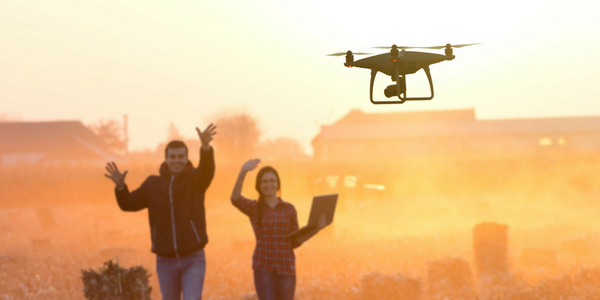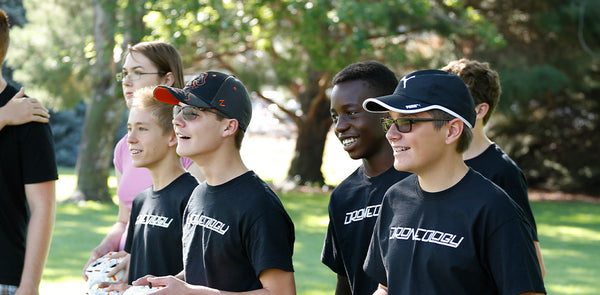
Drone Heroes: They Fly Among Us
How can we provide relief to unreachable areas, rescue people in perilous situations and save endangered species? With drones. Drones are the heroes of the technological age, coming to the rescue when a situation is too dangerous for humans to enter.
Swimmer Rescue
In January 2018, an Australian drone was the first UAV to perform a swimmer rescue. Two teenage boys got caught in 10-foot waves, more than half of a mile from the shore. “Little Ripper,” a drone equipped with a self-inflating flotation device, launched into the air, traveled from the shore to the boys and dropped the floatation device for them to hold onto, all in under 70 seconds. This same maneuver would have taken much longer for the human lifeguards and could have put more people in danger.
Search and Rescue Missions
Drones have absolutely revolutionized the possibilities for search and rescue. They allow lightning-speed data gathering, support the simultaneous use of high-resolution video and thermal imaging and deliver life-saving food, flotation and communication devices to stranded individuals. Rick Allen, a Scottish mountaineer, fell 100 feet while attempting to climb Broad Peak in Pakistan. Hanging on a cliff in the Himalayas, there was almost no chance of rescue until two nearby climbers used their drone to film the area, spotting Rick and directing climbers from camp to his rescue. By following the drone, Rick was able to move toward the rescue climbers and make his way down the mountain, suffering only minor injuries.
In more coordinated efforts, fire, police and search and rescue departments have begun implementing drones to find missing people. Even before firefighters arrive onsite at a burning building or forest fire, first responders use a drone equipped with thermal imaging to identify human heat signatures and assess the scale of a fire. This helps commanders make informed decisions before ever sending humans into potentially perilous situations.
Search and rescue teams around the world have found drones incredibly useful in their efforts to find and help the lost or stranded. One Icelandic search and rescue team uses drones to rescue individuals stuck in glacial crevasses. The drone is small, portable and efficient, allowing them to access unreached places and survey large areas quickly without being restrained to the view from the ground or a helicopter. Their drone also has obstacle-sensing technologies, enabling it to navigate narrow crevasses without crashing. With this new drone technology, they can save people faster.
Disaster Relief
In hurricanes, fires and floods, it is incredibly expensive, difficult and dangerous to provide aid and relief. Sending humans in means endangering more people and paying for helicopters or other transportation. During disasters, drones can assist in numerous areas, including delivering supplies, restringing power lines and even providing cellular service. The video below shows how a drone from AT&T was used in Puerto Rico after Hurricane Maria to provide wireless connectivity to thousands.
With this drone technology, restoration efforts happen much more quickly and smoothly than ever before.
In areas where fires or earthquakes have disturbed structures, drones can remotely enter the area to assess structural damage, preventing anyone from getting hurt by entering an unsafe building or crossing a damaged bridge.
Endangered Species Rehabilitation
Using drones to save endangered species is a relatively new addition to the myriad of ways drones can be used for good. In Montana, biologists are using drones to help with the preservation of black-footed ferrets — the most endangered mammal in North America. These ferrets rely on a diet of prairie dogs, but prairie dogs are facing risks of their own. They are one of the most popular foods on the prairie, hunted not only by ferrets, but also by coyotes, hawks, badgers, mountain lions, foxes, golden eagles and long-tailed weasels. Prairie dogs are also battling against sylvatic plague, a bacterial disease that has been treated in humans but runs rampant among the prairie dogs. Entire populations can be wiped out by this disease within weeks.
In order to save the black-footed ferrets, the biologists must first save the prairie dogs. To increase the populations of prairie dogs, they need to address the plague that is wiping them out. How can they do that? Drones and peanut butter balls. Nate Hegyi reports,
“Drone pilots fly the machines across the prairie, dropping blueberry-sized pellets about every 30 feet. They are flavored to taste like peanut butter, and prairie dogs love peanut butter. The kicker is that they're laced with a live vaccine that protects them from the plague.”

Kathryn Scott Osler/Denver Post via Getty Images
This ingenious solution is still a work in progress, as it has only been used for a couple of years. However, with continued testing and innovation, researchers are confident that drones can be an effective tool in the preservation of species around the globe. Drones are already being deployed as non-invasive research tools to track the actions and well-being of polar bears, collect snot samples from whales and monitor the population of heavily-poached Rhinos in Africa.
Training for the Future
All of these amazing drone feats demonstrate the importance and versatility of drones. As new technologies develop, drones will become a part of every job, from lifeguard to wildlife researcher to fire chief. Because of these extensive drone career opportunities, PCS Edventures has developed a way for students to begin familiarizing themselves with drones at an early age. Our Discover Drones package equips students with experience not only flying drones, but with building, configuring and troubleshooting them as well. Our program also provides extensive training in the ethics and FAA regulations that are essential to responsible drone piloting.
If you want to learn more about the ways drones are being applied to the challenges of today and how they might be used in the future, check out our past and upcoming webinars. In these seminars, we’re joined by education and industry professionals as we discuss the extensive applications for drones, showing you how and why they need to be incorporated into educational environments.









